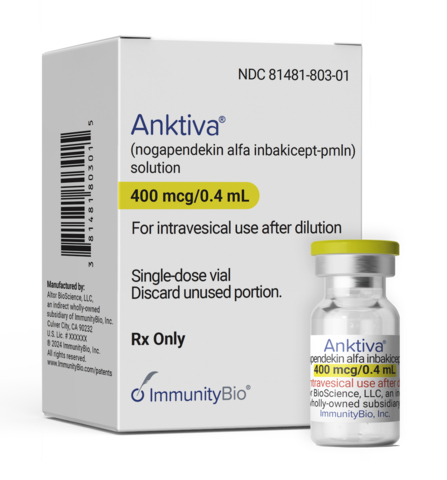Glaukos Corporation, a leader in ophthalmic medical technology and pharmaceuticals with a focus on novel treatments for glaucoma, corneal disorders and retinal diseases, has secured US Food and Drug Administration (FDA) approval for iDose TR (travoprost intracameral implant) 75 mcg, a prostaglandin analog intended for one-time use per eye. This innovative therapy is aimed at decreasing intraocular pressure (IOP) in individuals with ocular hypertension (OHT) or open-angle glaucoma (OAG).
“The FDA approval of iDose TR represents a significant milestone for Glaukos following an extensive pioneering journey since the inception of the original idea nearly 15 years ago. Today’s approval ushers in a new era of interventional glaucoma therapy by enabling a more proactive and reliable approach for patients in need,” said Thomas Burns, Glaukos chairman and CEO, in the company’s press release.
OAG is marked by increased IOP and ongoing optic nerve damage, leading to the notable excavation of the optic nerve head and corresponding visual field impairments. OHT, on the other hand, involves elevated IOP but lacks noticeable visual field alterations or visible damage to the optic nerve head.
Unmanaged OHT, particularly with IOP levels above 21 mmHg, poses a significant risk for evolving into primary OAG. This type of glaucoma is characterized by a gradual loss of nerve fibers and deterioration of the optic disc, culminating in distinctive visual field loss.
Glaucoma stands as a leading cause of visual impairment, contributing to an estimated 3 million cases of blindness and 4 million cases of moderate to severe visual impairment globally. Elevated IOP is a key factor associated with an increased risk of visual field loss progression in individuals with OAG or OHT.
XTALKS WEBINAR: Addressing Ophthalmology Clinical Trial Design and Effective Data Monitoring Committee Strategies
Live and On-Demand: Thursday, February 8, 2024, at 1:30pm CET/EU-Central (7:30am EST)
Register for this free webinar to gain insights into statistical data strategies for ophthalmology clinical trials and learn best practices for establishing and reporting ophthalmic data.
How Does iDose TR Work?
iDose TR is engineered to lower IOP in individuals diagnosed with OAG or OHT. This sterile implant, containing 75 mcg of travoprost, is inserted via a minimal, transparent incision in the cornea and secured at the iridocorneal angle in the sclera.
It consists of a titanium reservoir with a specialized membrane that facilitates the continuous release of travoprost. As a prostaglandin analog and selective FP prostanoid receptor agonist, travoprost free acid is thought to decrease IOP by enhancing uveoscleral outflow.
Safety and Efficacy of iDose TR
The FDA’s endorsement of iDose TR is backed by robust clinical data. Phase III studies, encompassing 1,150 participants at 89 sites, demonstrated initial three-month IOP reductions ranging from 6.6 mmHg to 8.4 mmHg with iDose TR, versus 6.5 mmHg to 7.7 mmHg with the timolol control. This range indicates the average IOP decrease at six FDA pre-determined time points at 8 am and 10 am on Day 10, Week 6 and Month 3. Initially, iDose TR showed non-inferiority to timolol ophthalmic solution in reducing IOP over the first three months, but iDose TR did not maintain non-inferiority in the following nine months.
The most common ocular side effects reported by 2 percent to 6 percent of participants treated with iDose TR in the clinical studies were elevated IOP, iritis, dry eye and visual field abnormalities. These adverse reactions were generally mild and temporary.
“The clinical data suggest that iDose TR is not only effective with a favorable safety profile, but it has potential to relieve patients from the burdens of prescription eye drops for an extended period of time,” said John Berdahl, MD, clinician and researcher at Vance Thompson Vision, in the news release.
What Is the Price of iDose TR?
Glaukos plans to start the initial commercial launch of iDose TR in the latter part of the first quarter of 2024. The wholesale acquisition cost for iDose TR has been set at $13,950 per dose (or implant).
Other New Treatments for IOP
In 2022, Santen, a global eye health company, and UBE Corporation, a Japanese chemical firm, jointly announced the FDA’s approval of Omlonti (omidenepag isopropyl ophthalmic solution) 0.002 percent eye drops. This medication is approved for reducing IOP in patients with OAG or OHT. Clinical trials have shown consistent IOP reductions in all study groups. Specifically, the Omlonti group saw IOP decreases ranging from 5 mmHg to 7 mmHg across all three studies, with similar reductions observed in the timolol and latanoprost groups, at 5 mmHg to 7 mmHg and 6 mmHg to 8 mmHg respectively.
In 2022, Thea Pharma’s Iyuzeh (latanoprost ophthalmic solution) 0.005 percent was granted FDA approval for reducing IOP. As a prostaglandin analogue, its use is aimed at decreasing elevated IOP in patients with OAG or OHT. In controlled clinical trials with patients having OAG or OHT and an initial IOP between 19 mmHg to 24 mmHg, Iyuzeh showed an IOP reduction of 3 mmHg to 8 mmHg. This compares to the 4 mmHg to 8 mmHg reduction with Xalatan (latanoprost ophthalmic solution) 0.005 percent, which includes benzalkonium chloride as a preservative. Notably, Iyuzeh is distinguished as the first and only latanoprost formulation without preservatives.












Join or login to leave a comment
JOIN LOGIN